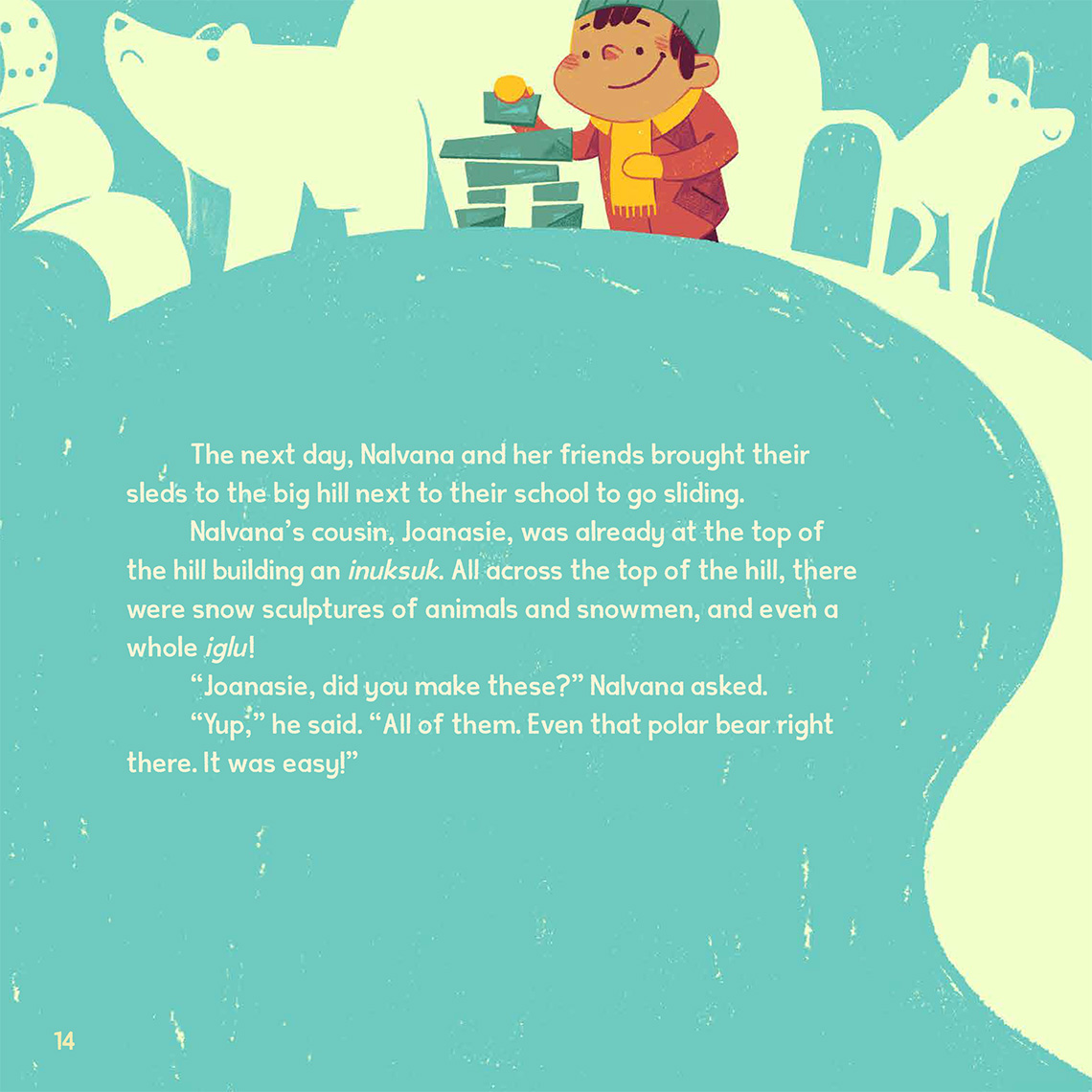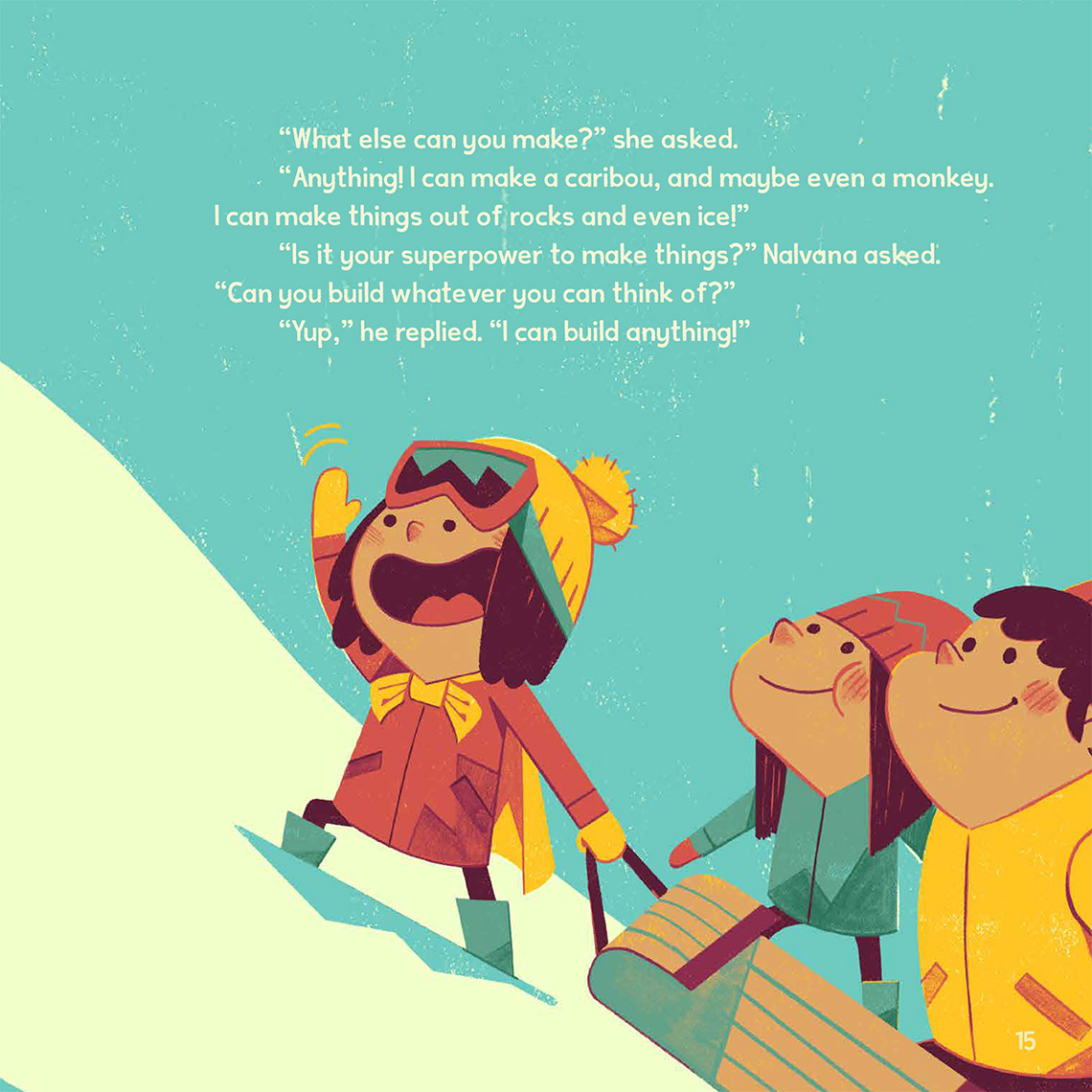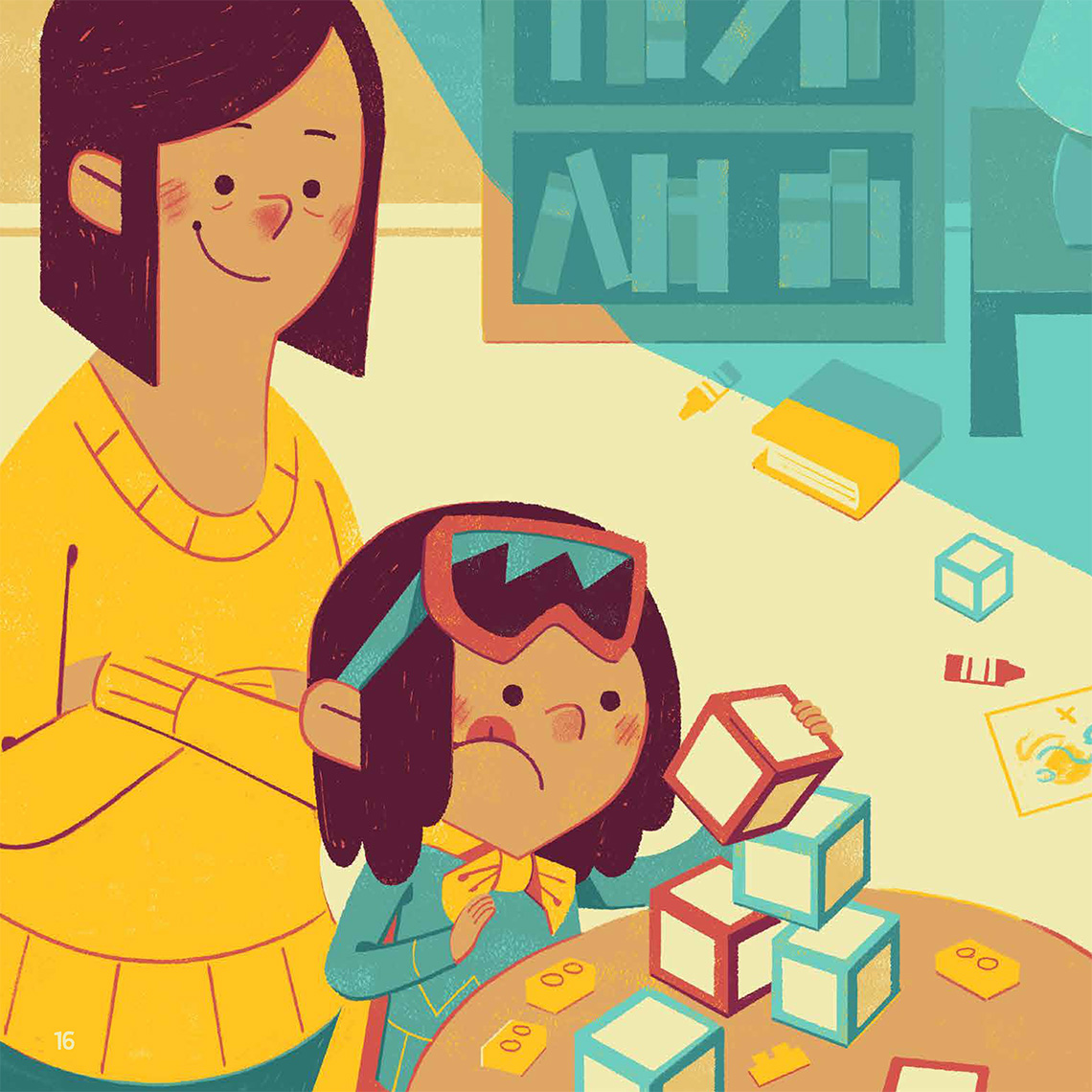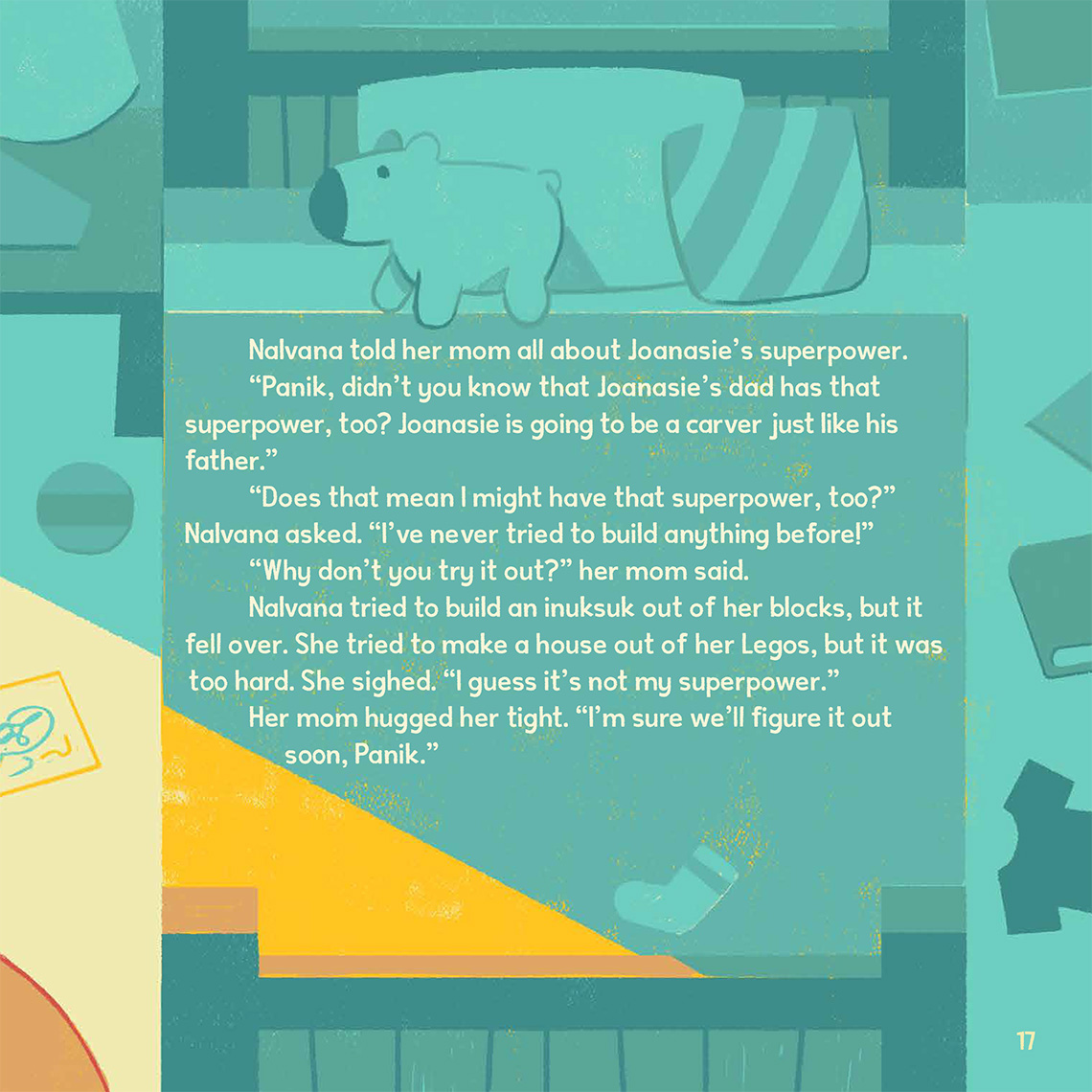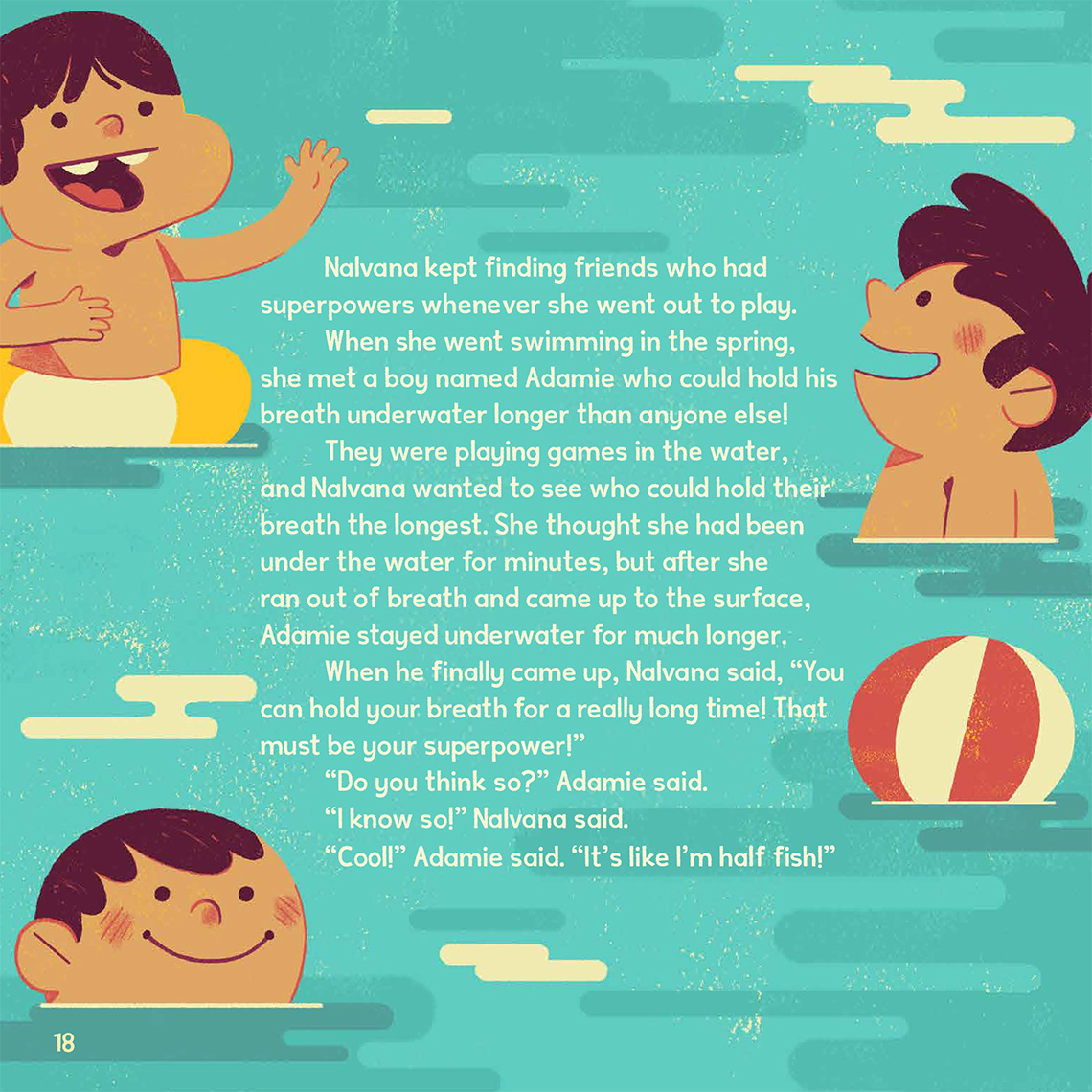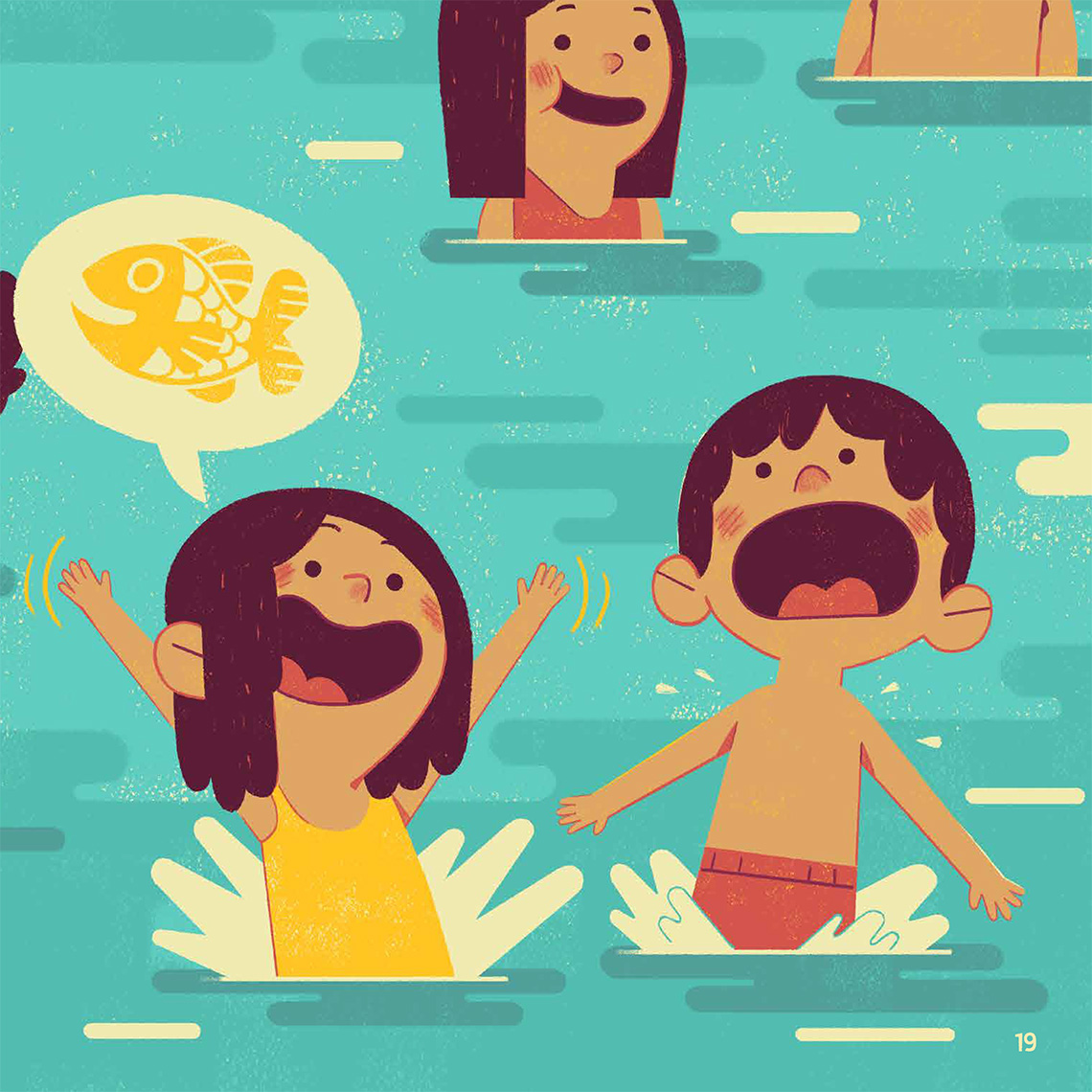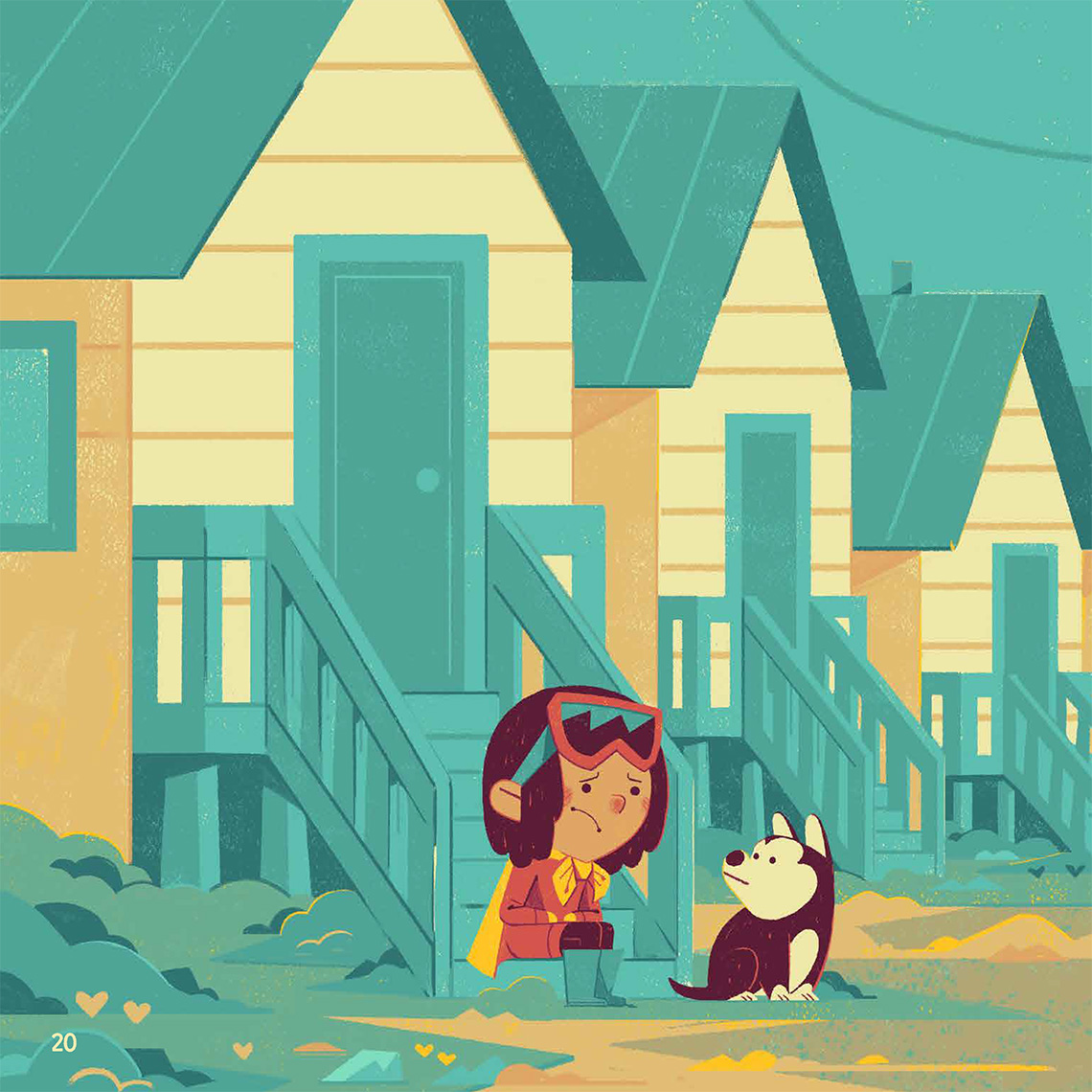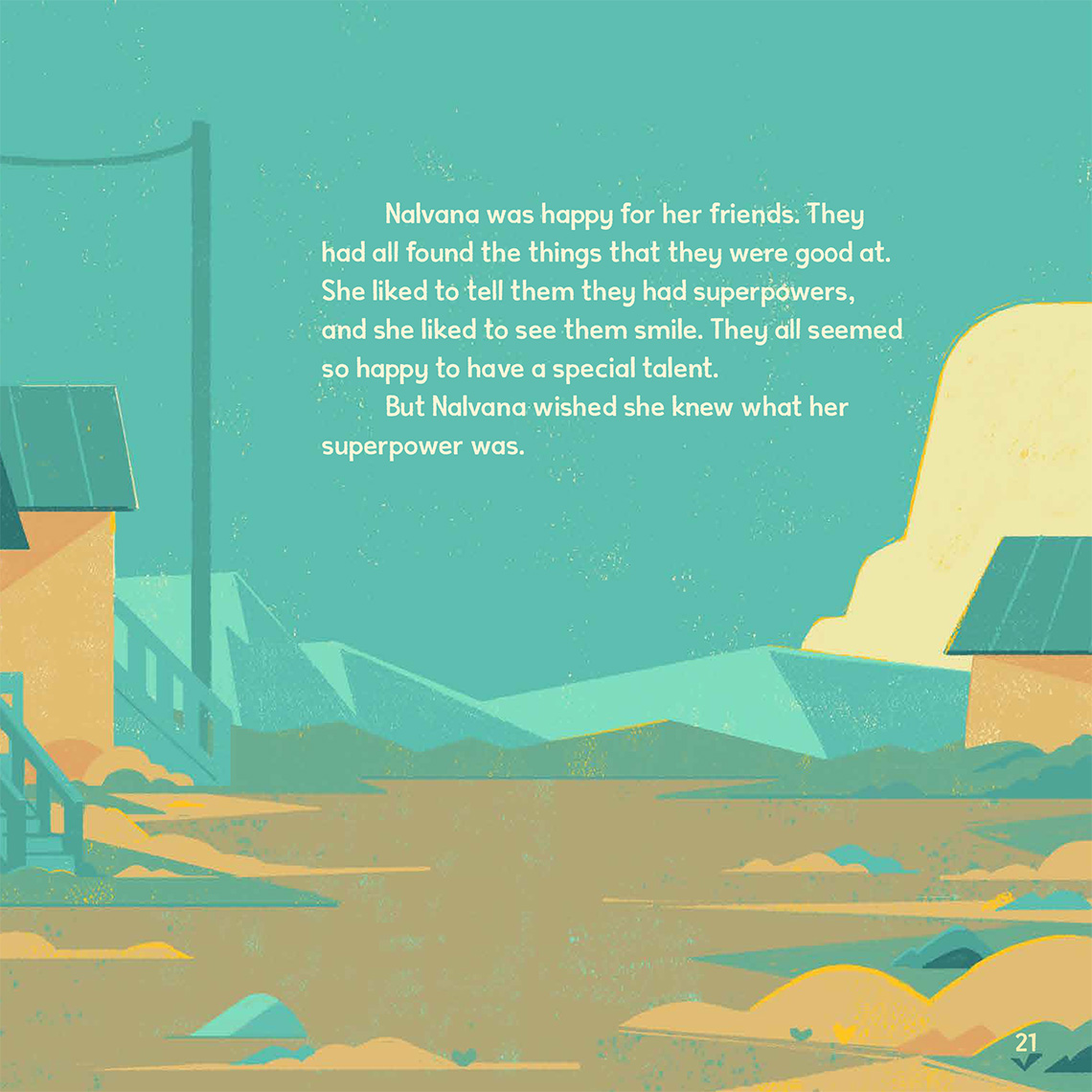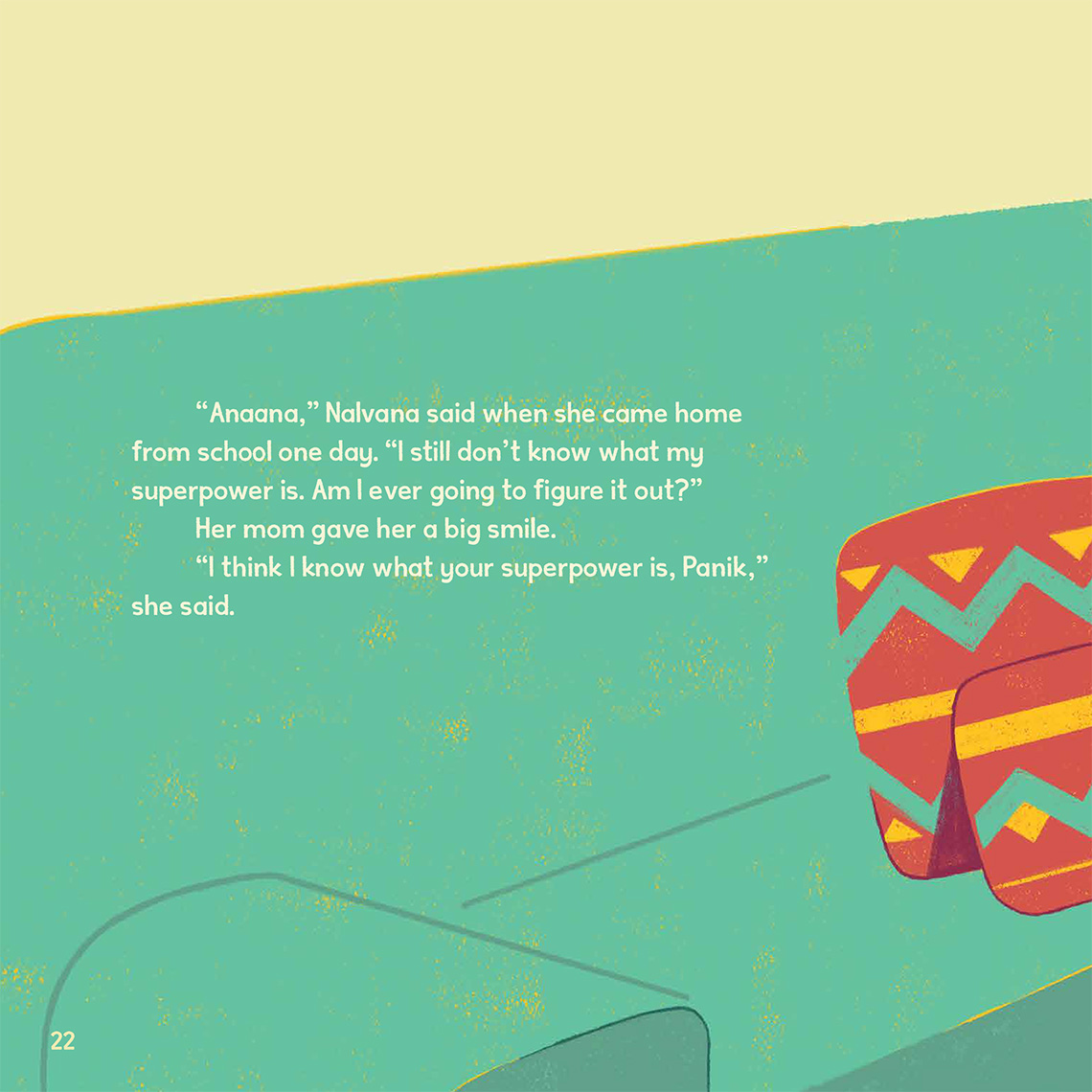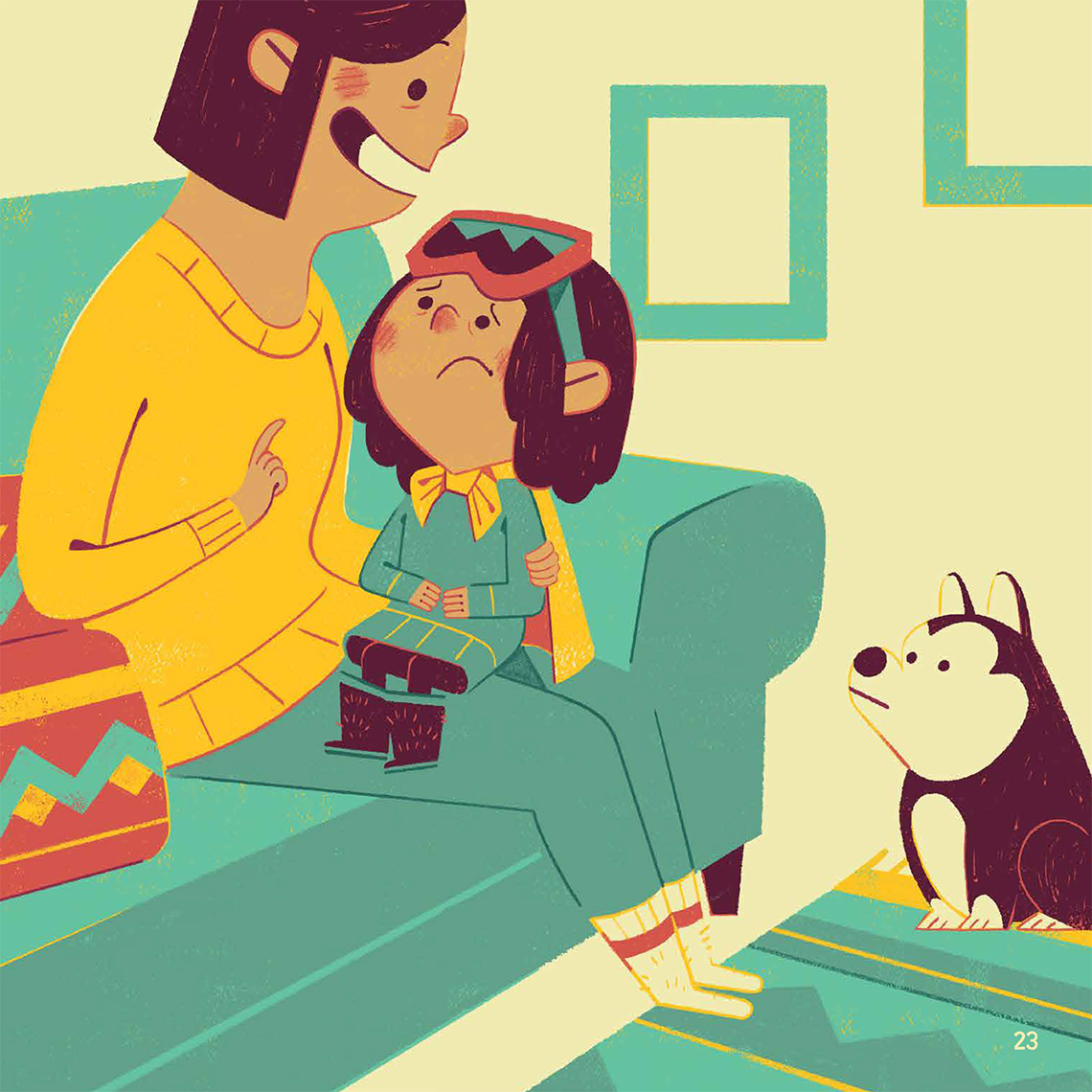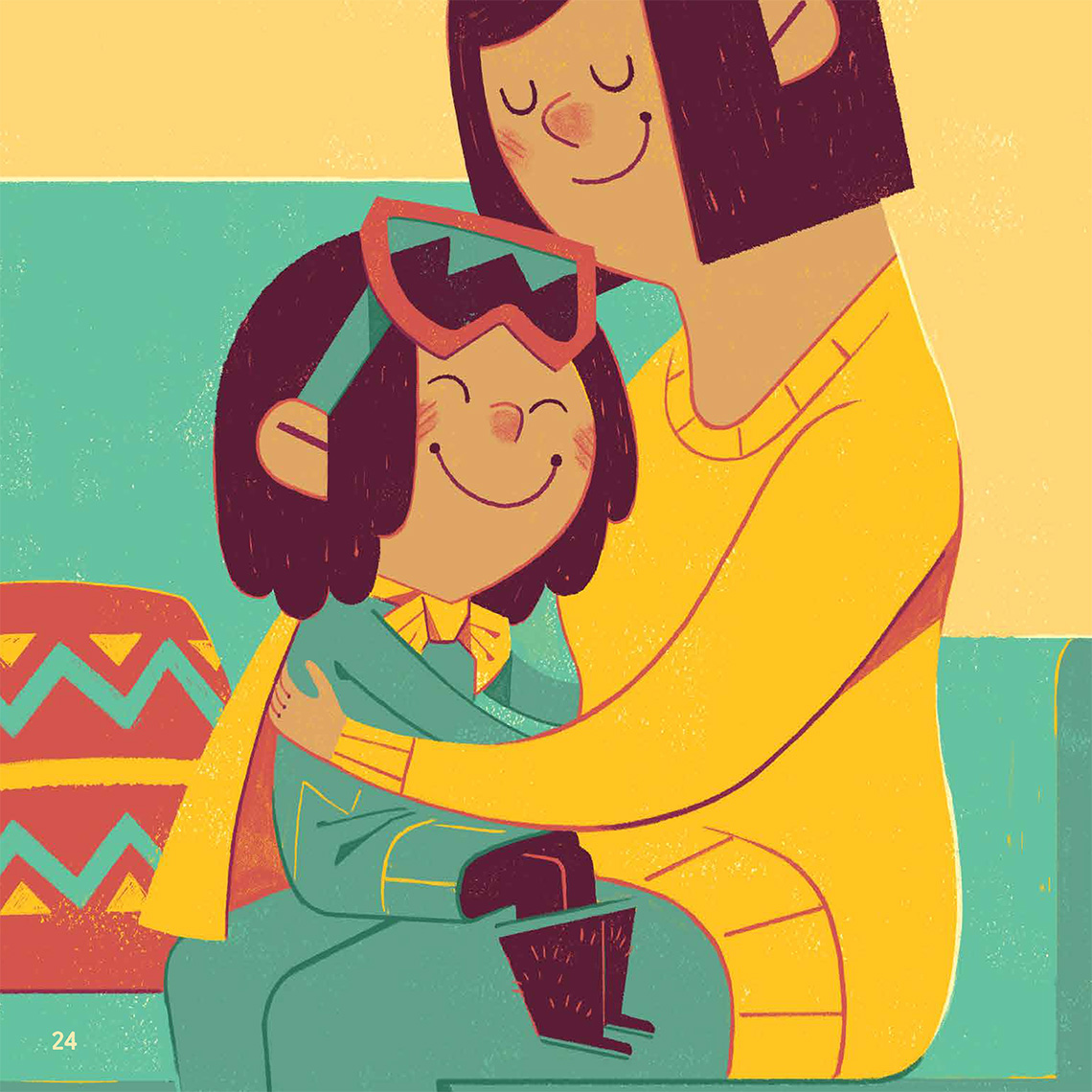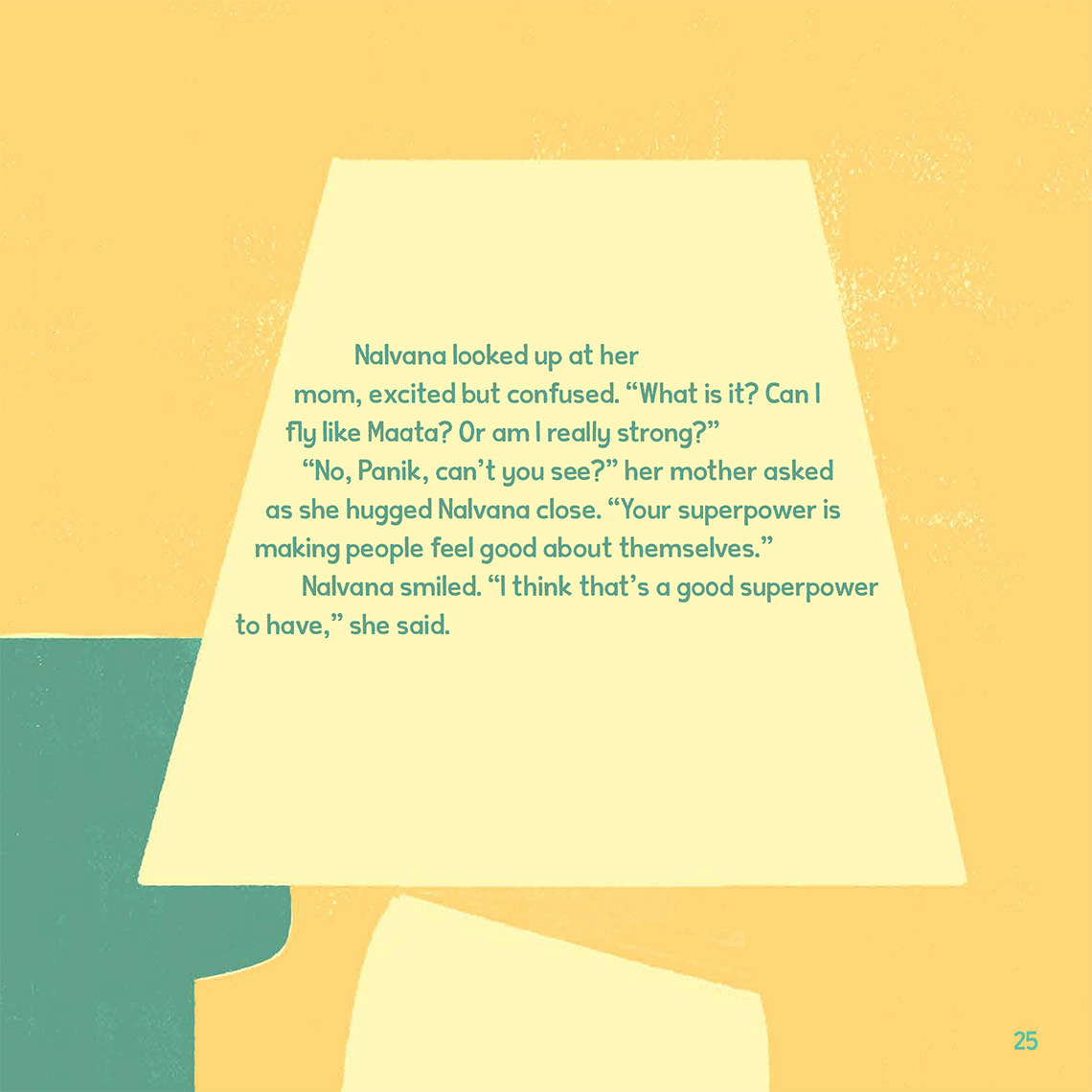Minds On
Let’s warm up!
Don’t forget to do your safety check!
Warm Up
Warm up
Imagine that there is a candle in front of you, with the flame burning brightly. It’s time to blow out the candle. Take a deep breath in through the mouth and exhale slowly through the mouth as well, blowing out the flame on the candle. If you wish, you can imagine having a few candles in front of you. You can use this breathing exercise to blow out as many candles as you would like.
Access the next audio recording entitled “Blowing Out Candles” to follow this exercise.
Blowing Out Candles
Word association game
Explore the following audio recordings. You will be given three words in each audio recording. Then try to think of a story using those three words. Respond with the first thing you think of!
Example: apple, school, playground
I went to school. I had an apple as part of my lunch. Then after lunch, I got to play on the playground.

Access the following audio recording entitled “Word Association 1” to find out the first set of words and make up a story with them.
Word Association 1
Good job!
Want to try it again?
Explore the following audio recording entitled “Word Association 2” to find out the second set of words and make up another story.
Word Association 2
Let’s get started!
Explore this video entitled “16 Hudson: Stick to It” and think about the following questions.
- What do you think is going to happen next?
- How do you know?
Share your thoughts with a partner, if possible.
Action
Get ready, get set…
Task 1: Problems!
In the video “16 Hudson: Stick to It,” Eddie loses his hockey stick! Explore the rest of the video to find out what happens.
Pause Reflect
Pause and reflect
Let’s take a moment and reflect on the following questions.
- How did you feel when Eddie lost his hockey stick?
- What did Eddie do when he lost his hockey stick? How did this moment affect the characters in the story?
Press ‘Answer’ to learn about what Eddie did when he lost his hockey stick, and how this moment affected the characters in the story.
Task 2: The problem rollercoaster
Drama stories often have a problem that needs a resolution. A resolution is when a problem is solved.
Having a problem in a drama story makes the story more exciting and interesting because you don’t know what is going to happen next or how the characters are going to solve it.
Picture a problem and a resolution in a drama story like riding a rollercoaster. The story starts off slow, just like a rollercoaster. As you lead up to the problem, you go a bit faster. Then, the problem happens and you pause for a moment at the very top. Finally, you solve the problem and whoosh, you are going fast again!
Let’s take the story of Eddie’s hockey stick from the video “16 Hudson: Stick to It.”
If the story was a rollercoaster, it would be like the following image.

The story of Eddie in “16 Hudson: Stick to It” depicted on a rollercoaster. Starting from the left, the first box has the following text: Eddie is cleaning his room, trying to find his Jordan Nolan hockey stick. The second box on the rollercoaster has the following text: Eddie is working on a presentation about Jordan Nolan. The third box has the following text: Where’s the hockey stick? The fourth box, which is in the middle and highest point of the rollercoaster, has the following text: The hockey stick was sold at the yard sale! It’s lost forever! The fifth box has the following text: Eddie decides to do his presentation without the hockey stick. He gets a message from Jordan Nolan! The sixth box has the following text: Eddie finds his hockey stick! Hurray! The seventh and final box, which is at the end of the rollercoaster, has the following text: Eddie gets his hockey stick back by using a lampshade to hold up his neighbour’s tomatoes. The end!
Pause Reflect
Pause and reflect
Let’s take a moment and reflect on the following questions.
- What is the problem?
Press ‘Answer’ to learn about the problem.
- How was the problem resolved?
Press ‘Answer’ to learn about how the problem was resolved.
There are many ways that you can have problems and resolutions in drama stories.
Press the following tabs to access a few examples.
Characters can cause problems in many ways. Perhaps two friends had a fight. That’s the problem. But later they talked and made up. That’s the resolution.
Let’s say you had a story that was set by a big volcano. And the volcano erupted! That’s the problem. But scientists then used technology to make sure that the volcano stopped erupting. That’s the resolution.
Events in your story can cause problems. Let’s say two friends are watching a movie about dinosaurs. Then a real dinosaur appears! That’s the problem. The two friends make friends with the dinosaur, so it doesn’t hurt them. That’s the resolution.
In the video “16 Hudson: Stick to It,” Eddie lost his hockey stick but later found it. That’s an example of a character causing a problem and then resolving it!
Task 3: Review of What’s My Superpower?
Let’s review What’s My Superpower? through the following images.
Check out this audio recording entitled “Review Inuktitut” to explore the story in Inuktitut.
Review Inuktitut
Now access this audio recording entitled “Review English” to explore the story in English.
Review English
Go!
Your turn
What do you think the problem is in the book, What’s My Superpower? What is the resolution?
Complete the What’s My Superpower? Rollercoaster in your notebook or using the following fillable and printable document. Consider adding your work to your drama portfolio.
Record the events of the story, making sure to include both the problem and the resolution.
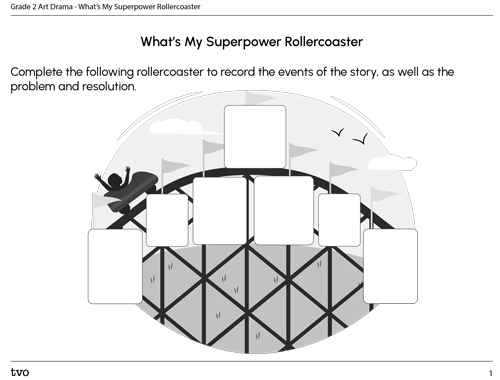
Press the Activity button to access the What’s My Superpower? Rollercoaster.
Activity (Open PDF in a new tab)Consolidation
Retelling skills

We’ve learned that good drama stories have a problem and a resolution. Choose either What’s My Superpower? or the video “16 Hudson: Stick to It,” and practise your retelling skills.
Include the problem and the resolution along with the beginning, middle, and end of the story.
You can retell by:
- acting it out
- making a presentation
- narrating the story to someone
- making an audio recording
- creating a collage or poster
Portfolio
Drama portfolio
Consider adding the answers to the following reflection questions to your drama portfolio.
- What happened to Eddie’s hockey stick? How did Eddie face this challenge?
- How might drama stories help you overcome challenges?
- Name one thing you learned about drama today.
Reflection
How do you feel about what you have learned in this activity? Which of the next four sentences best matches how you are feeling about your learning? Press the button that is beside this sentence.
I feel…
Now, record your ideas about your feelings using a voice recorder, speech-to-text, or writing tool.
